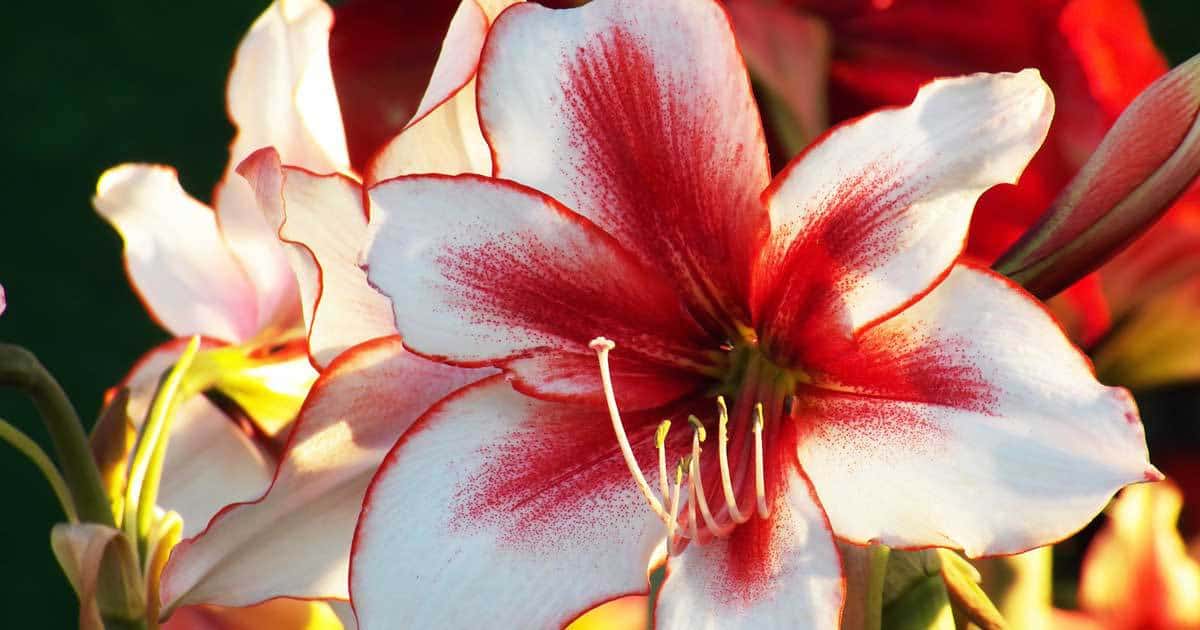
Question: When picking lily bulbs for our landscaping are there any tips on color combinations to follow, so the colors flow? Tonya, Petersburg, Virginia
Answer: Tonya, when planting your new lilies in the garden this fall – whether you’re putting in a few or several hundred – don’t sell them short!
Use them where they will be most effective, where their regal beauty will accent, contrast or complement their garden companions. And – plant them properly so that the bulbs will not be forced to undergo tribulations in order to succeed.
How can you use lilies most effectively?
Well, there are four factors which must influence your choice of plants:
- Height
- Direction in which the blossom faces
- Blooming time
- Color
Lilies should be placed where they will not:
- Be drowned out by taller-growing plants
- Where their blooms look garden visitors frankly in the face (upward-facers should go below eye level, outward-facers at eye level and downward-facers at or above eye level)
- Where their time of bloom coincides with or supplements their neighbors’
- Above all, where their colors will be most effective
And, with today’s ever-widening range of lily colors, as well as the much-extended blooming period – June to frost – the exciting uses to which lilies may be put are many indeed.

Hot Color Advice
My advice to gardeners would be to shun the use of hot-colored flowers as companions for vivid lilies.
Put the orange, bright red and intense yellow lilies with pale, pastel companions so that there is contrast, not competition – flattery, not visual vituperation.
When selecting pink neighbors for these warm-colored lilies, hew to the warm side of the color chart, to the salmon pinks, for bluish pinks will jangle.
White lilies, on the other hand, complement and enhance warm or even hot-colored flowers. And white lilies are particularly delightful, I think, with cool-colored flowers.
On midsummer dog days, when even a scrap of shade is welcome, white lilies waving gracefully among blue, blue-violet, pale pink and white flowers can make a garden look air-conditioned – particularly if the flowers are seen against shade. Stay on the cool side of the flower spectrum and you’ll feel cooler.
Another ideal use for white or pale-colored lilies is against and among darker plants. Needled and broad-leaved evergreens, deep-colored, shaded leafy screens and hedges will silhouette the lilies as the sun picks them out.
Choosing Companions For Lilies
Remember, too, when choosing companions for lilies that the foliage of all plants used together should be related.
Large lilies with coarse foliage will look even coarser if the supporting cast is unduly delicate.
Smaller and more delicate lilies can be made to look more important by furnishing them with companions of greater fragility and refinement.
For best effect, lilies should dominate in some compositions, while in others they must play a supporting role, albeit with the assurance of a star.
But to get down to cases. For early-in-the-season bloom in the garden border, Golden & Rainbow lilies followed closely by the Madonna and Cascade strain group, combine beautifully with white, blue, blue-violet and purple delphiniums.
Lilium testaceum’s amber orange, for instance, and the warm hues of the Lliium hollandicum-tigrinum hybrids highlight the deep dark tones of delphinium and are also pleasant with the whites.
For a finishing touch, add a base planting of dwarf or medium-sized lemon marigolds. These will not only enhance the warm colors of the lilies but shade their roots and provide a living mulch.
Hot August Colors
During torrid August, it is pleasant to see the pink selections and the white-with-brownish-reverse of Lilium sargentiae in the border either with the late-summer perennial phlox, fall asters, double and single Shasta daisies and early chrysanthemums or with annuals which are then beginning to come into their own full glory at that time.
September brings Lilium speciosum with its white and pink-or red-spotted hybrids.
They look best with annuals, chrysanthemums and fall asters, especially the new compact dwarf varieties whose pinks, lavenders, whites and blues flatter the lilies. Blue aster which does well for me, is excellent also with Lilium formosanum and its hybrids, whose white and purplish brown reverses are a good foil for the blue aster.
These are only a few of the lilies which may be used, of course, and only a fraction of the effective combinations for them in the garden border.
by J Brimer